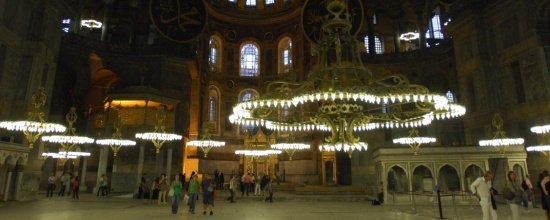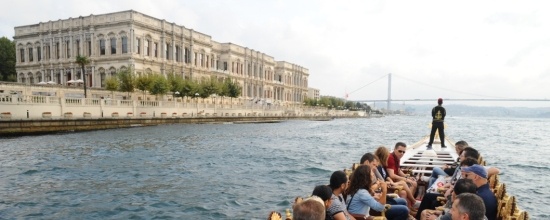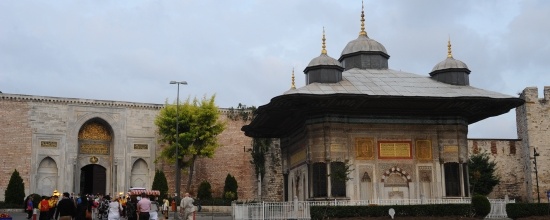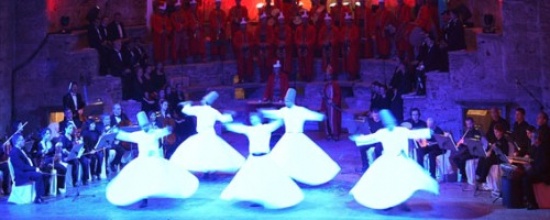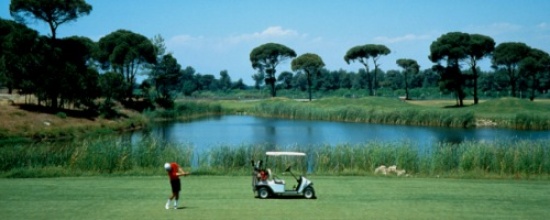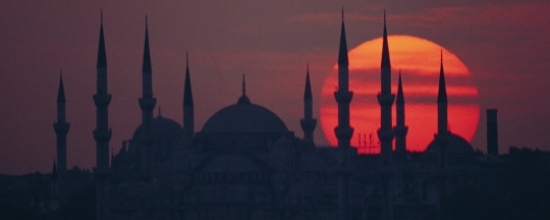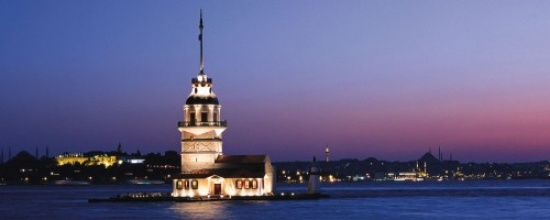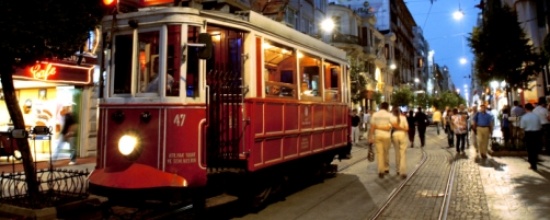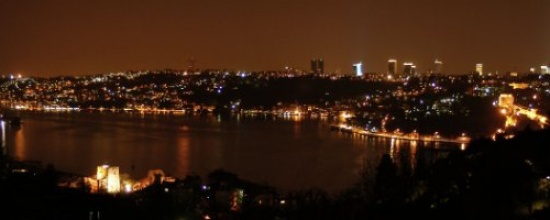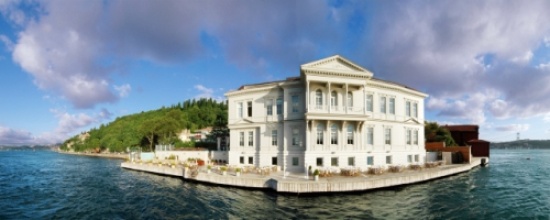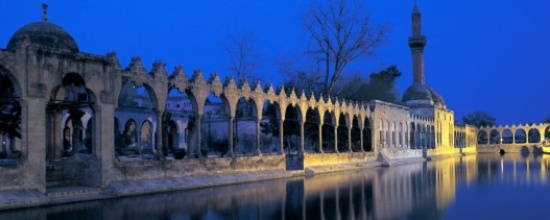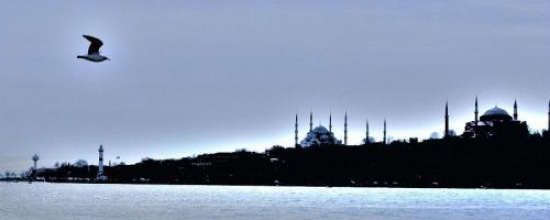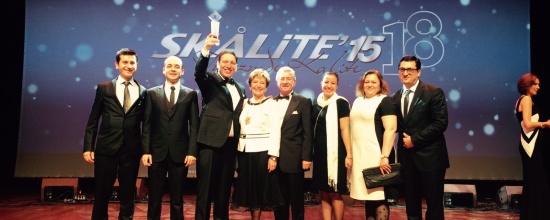Kulliye
Kulliye is privately owned, three storey museum which is located next to the famous Byzantine church later converted into a historical mosque “Gul Cami”. The venue is located at the shores of “Golden Horn” providing excellent view of the historical peninsula.
Inside of the building is decorated in a way that once you enter the building you feel yourself in a street from the Ottoman time. The journey takes you through the centuries of the Ottoman time to the Istanbul in early 1900s.
The first floor displays a typical Istanbul street during the Ottoman time where you will see street sellers (i.e. chestnut, sherbet, cotton candy sellers and photographers). The second floor displays an exhibit of original Ottoman costumes.






On the third floor, we can have below activities;
Preparing Turkish Delicacies
There will be a set-up of four stations where the experts prepare below mentioned Turkish delicacies;
- Gozleme; Turkish hand made pastry which is hand rolled and filled then sealed finally cooked over a griddle.
- Manti; Turkish ravioli
- Stuffed Green Pepper in Olive Oil;
- Lokma; Turkish dessert, fried sweet dough covered in syrup.
Guests will have chance to watch and learn and then to sample above delicacies.


Traditional Dancing and Rhythm Instruments
In the same venue it is also possible to organize below activities where we can divide the group into four stations;
- Belly Dancing Course
- Folk Dancing Course
- Rhythm Group (playing “darbuka”, drum, tambourine and castanet)


Art of Glass Furnace
The traditional art of glassware in Turkey can be seen as two areas of study, the glassware of the Seljuk and the Ottoman periods. They transported their own skill and taste wherever they conquered and settled and added it to local art, raising it to new highs. The Seljuks were well known for their raised glass called “semsiye”. They used both blown and wheel-turned glass techniques and decorated them with incised motifs “oyma”, engraving “kesme” and lustre “perdahlama”
We know of the existence of some, if not many, glass artefacts of the Seljuk period in Anatolia, dating from an era when the Seljuk Turks were newly migrated from the east and on the peninsula. Some pieces of the Seljuk and Artukid period are now in museum collections. These are mainly fragments from architectural decoration, or architectural artefacts.
The Ottomans improved upon the art by innovating new techniques. Glassworkers were organized into a powerful guild, protected by the government and they participated in royal ceremonies; each craft and profession having its own system which dealt with all matters related to that craft, from the supply of raw materials to the processing of those materials, the form of the finished article and the conditions of its sale.
Traditional Anatolian glass bead making is a living folk tradition going back thousands of years. It has survived with its almost magical methods of manipulating glass, turning it into whimsical beads with superstitious powers against evil or envious eyes.
The traditional glass industry produced some of its finest ware during the
17-18th centuries, and yet very little documentary material has survived from that period.


Water Marbling – Art of “Ebru”
One of the most unique and beautiful forms of Turkish art is Ebru, or water marbling. Ebru is formed by drawing designs with dye on top of water, and then carefully placing paper on the surface of the water in order to absorb the dye.
The earliest examples of Ebru are found in the Topkapi Palace in Istanbul, and are dated 1539, but the detail and quality of the work suggests that Ebru was present long before this time in the Ottoman Empire. Ebru has traditionally been rarely signed, and therefore many great artists remain unnamed. Modern day students may study for more than 10 years before being considered master marblers, learning how to make the perfect dye, water bath, and design. Since each dye bath can only be transferred to paper once, every original piece of Ebru is unique.
The first step in Ebru is getting the perfect dye. Dyes are created from various organic substances. Soil from Istanbul, white lead, ind igo from Pakistan, and red ochre are used to create the perfect color. 24-karat gold may be added to the dye in order to provide shimmer and shine. The dye is mixed with ox-gall, and water, an art form in itself, since each dye is unique depending on the time of year collected, its age, and its fineness. Ebru artists often spend years simply learning the art of mixing dye, before ever attempting their first marble.
The next step in Ebru is getting the perfect water bath in which to place the dye. White kitre, a gum like substance, must be place in the Ebru water in order to keep the dye design in place and in order to allow the design to stick to the paper. Fresh kitre is available in herbal shops during the fall, and every marbler buys enough kitre to last an entire year. The density of the kitre, along with the type of water being used, requires the marbler to make many attempts before getting the correct stickiness. Too little, and the design spreads before it can be finished and won’t adhere clearly to the paper. Too much, and the paper becomes difficult to remove, again smearing the design. Once the correct balance of kitre and water is achieved, the mixture is left overnight, with occasional stirring. After four days of settling, the water mixture is poured through a cloth bag, and is then finally ready to be used.
Next, the marbler gathers her homemade horsehair brushes for detail work, needles for dropping dye onto the water, and homemade combs for drawing the dye through the water. The water is placed in a tray, only slightly larger than the paper to be used.
Now, the creative portion of the work begins. Using only a mental idea of the finished product, the marbler drops dye onto the water surface with the needles, spreads the dye with the handmade combs, and uses the brushes to draw a design. Flowers, birds, geometric designs, and calligraphy are common choices for the Ebru artist.



For detailed information and reservation please contact us via our e-mail address by clicking here.



